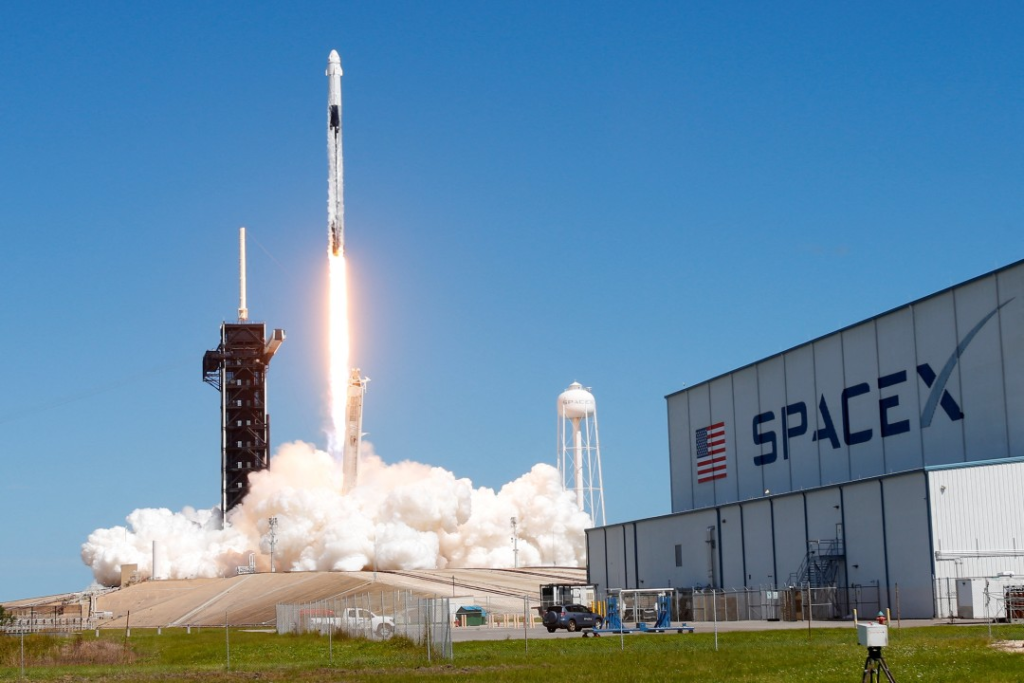
SpaceX has been the talk of the aerospace industry for years, and for a good reason. This company has transformed how we think about space travel and exploration, making it faster, cheaper, and more accessible than ever before. But how did SpaceX become such a game-changer? And what lies ahead for its ambitious goals, including missions to Mars?
This comprehensive article explores everything you need to know about SpaceX, from its early days to its current feats and future aspirations.
The Birth of SpaceX: A Bold Vision
SpaceX was founded in 2002 by Elon Musk with a clear goal—making space travel affordable and sustainable. At a time when sending a satellite into orbit was a costly endeavor, Musk believed that reusable rockets could drastically cut those costs. His vision was to reduce the price of space launches by reusing key components like the rocket boosters. It sounded ambitious, even impossible. Yet today, SpaceX has made it a reality.
Reusing Rockets: SpaceX’s Secret Sauce
One of the biggest breakthroughs SpaceX achieved is rocket reusability. This is the cornerstone of their success. The ability to reuse a rocket, instead of discarding it after a single use, has drastically cut the cost of space launches. The Falcon 9 rocket is a prime example of this innovation, with some boosters being reused up to 15 times!
This reusability doesn’t just save money. It also leads to quicker turnaround times between launches. What once took months to build from scratch now takes weeks, if not days. This opens the door to more frequent missions—whether it’s launching satellites, sending cargo to the International Space Station (ISS), or preparing for the much-anticipated mission to Mars.
The Falcon Series: Powerhouses of Space
SpaceX’s Falcon series of rockets, primarily the Falcon 9 and Falcon Heavy, have become iconic. The Falcon 9 has seen success in many missions, from delivering cargo to the ISS to deploying satellites for private companies. Its ability to land back on Earth after completing its mission is nothing short of incredible, often landing on drone ships in the ocean with pinpoint precision.
The Falcon Heavy is another beast entirely. This heavy-lift rocket is capable of sending much larger payloads into space, and it famously launched Elon Musk’s personal Tesla Roadster into orbit back in 2018.
SpaceX and NASA: A Match Made in Space
SpaceX’s partnership with NASA has been pivotal. The company’s Crew Dragon capsule now regularly takes astronauts to the ISS under NASA’s Commercial Crew Program. This collaboration has marked the first time a private company has taken on such a monumental task, pushing the boundaries of what’s possible in human spaceflight.
With SpaceX now handling crewed missions, NASA can focus more on deep space exploration, including returning to the Moon and eventually sending humans to Mars. SpaceX is, without a doubt, lightening NASA’s load while also expanding its own capabilities.
The Starship: Dreaming of Mars
Speaking of Mars, SpaceX’s Starship is the next big thing. This fully reusable spacecraft is designed to carry up to 100 passengers, not just into low Earth orbit, but to the Moon, Mars, and beyond. It’s designed to be refueled in space, meaning longer missions and more ambitious targets.
Mars has always been Elon Musk’s endgame. With Starship, SpaceX aims to establish a human settlement on the Red Planet. This could be the beginning of humanity’s multi-planetary future.
The Challenges Ahead
While SpaceX’s achievements are remarkable, there are still significant challenges. The reusability of rockets, while groundbreaking, isn’t without its risks. Rockets undergo extreme conditions during launch and re-entry, and even small malfunctions could lead to catastrophic failures. That’s why every reused rocket undergoes rigorous inspections before it’s cleared for another flight. But with SpaceX pushing the limits of what’s possible, could they be on a collision course with disaster?
Another challenge is the monumental task of Mars colonization. The technology is still in development, and we’re years away from seeing humans walk on Mars. The journey to Mars is also dangerous, with high risks posed by cosmic radiation, microgravity, and long-term isolation. These aren’t easy problems to solve, but if any company can tackle them, it’s SpaceX.
SpaceX’s Vision for the Future
So, where does SpaceX go from here? With its eyes firmly set on Mars, the company is also looking to revolutionize space internet with Starlink. This satellite constellation aims to provide global internet coverage, particularly for remote and underserved areas. Starlink is already in operation, with thousands of satellites orbiting the Earth, and it’s expected to grow rapidly in the coming years.
SpaceX is also looking to expand its role in the commercial space industry, from providing rideshare missions to private companies, to potentially developing space tourism.
Key Takeaways
SpaceX has changed the space game in ways no one thought possible. It’s all about bold ideas, technological innovation, and a relentless drive to push boundaries. From reusable rockets to preparing humanity for life on Mars, SpaceX has truly redefined what’s possible in space exploration.

